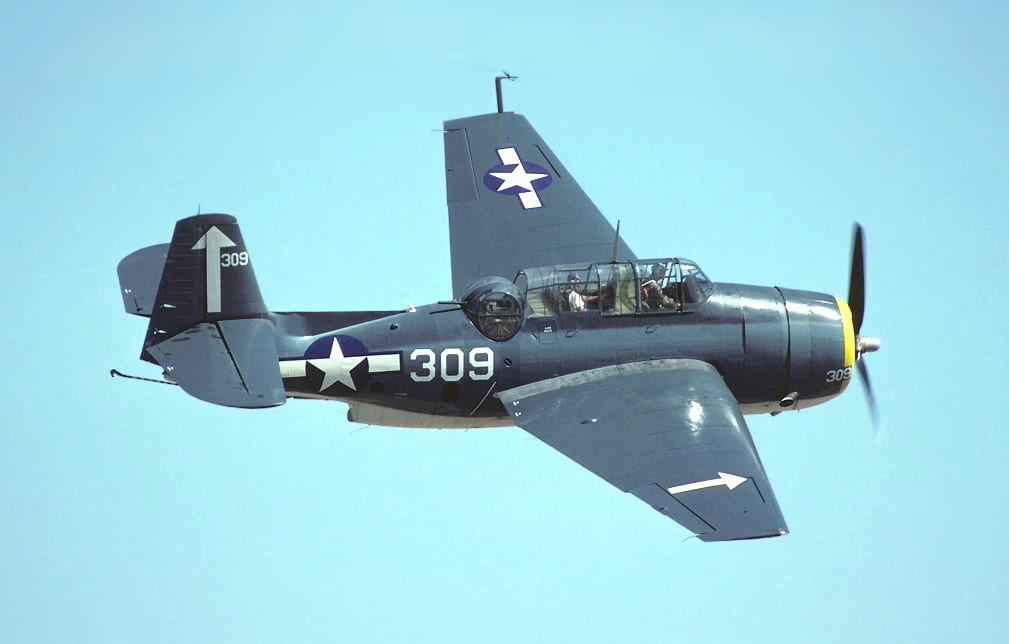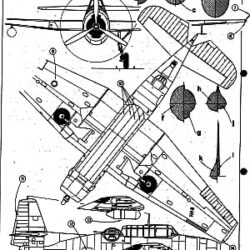Grumman TBF Avenger History
The Grumman TBF Avenger was the second leading aircraft of World War Two in the Pacific. In concert with the Douglas SBD Dauntless, it helped destroy Japanese sea power.
The Avenger was a pre-war design, two XTBF-1 prototypes of which were ordered by the U.S. Navy in April 1940. The first of these made its maiden flight on 1 August 1941, by which time a substantial order had been placed. The first production TBF 1s were delivered to Squadron VT-8 late in January 1942, and the Avenger made its combat debut early in the following June at the Battle of Midway.
The aircraft had typical Grumman lines, the most noticeable feature being the very deep fuselage, which enabled the torpedo or bomb load to be totally enclosed. The TBF-1C had two wing mounted 0.50 in machine guns in addition to the nose, dorsal and ventral guns of the original TBF-1, and could carry auxiliary drop-tanks. Both models were 3-seaters and were powered by 1,700 hp R-2600-8 engine.
The Grumman TBF Avenger would constitute a major part of the naval air arm, but its debut during World War Two was inauspicious. Six were committed without air cover during the June 4, 1942, Battle of Midway, and five were shot down by marauding Japanese Zeros. After that, TBFs compiled an outstanding record as a torpedo-bomber and sank thousands of tons of Japanese vessels. Among its victims were the battleships Yamato and Muashi, the world’s largest. In the Atlantic, 31 German Uboats were also dispatched.
Up to December 1943 Grumman built two thousands two hundred and ninety-three TBF-1/1C Avengers, including two original prototypes, one XTBF-2 and one XTBF-3. Four hundred of them were supplied to the Royal Navy as Avenger Mk Is (=TBF-1B) and sixty-three to the Royal New Zealand Air Force (RNZAF). The British aircraft were briefly known as Tarpons, but the U.S. name was later standardised. Meanwhile, in the U.S.A. production had also begun in September 1942 by the Eastern Aircraft Division of General Motors, which built two thousand eight hundred and eighty-two Grumman TBF Avengers as the TBM-1 and 1-C. Three hundred and thirty-four of these went to the Royal Navy as Avenger IIs. The ‘dash two’ variant was not built by either company, but Eastern completed a prototype and four thousand six hundred and sixty-four TBM-3s with upgraded Cyclone engines and their wings strengthened to carry rocket projectiles or a radar pod. Two hundred and twenty-two of these became the British Avenger III. Further strengthening of the airframe produced the XTBM-4, but production of this model was cancelled when the war ended. Ultimately, a total of 9,842 Grumman TBF Avengers were manufactured.









